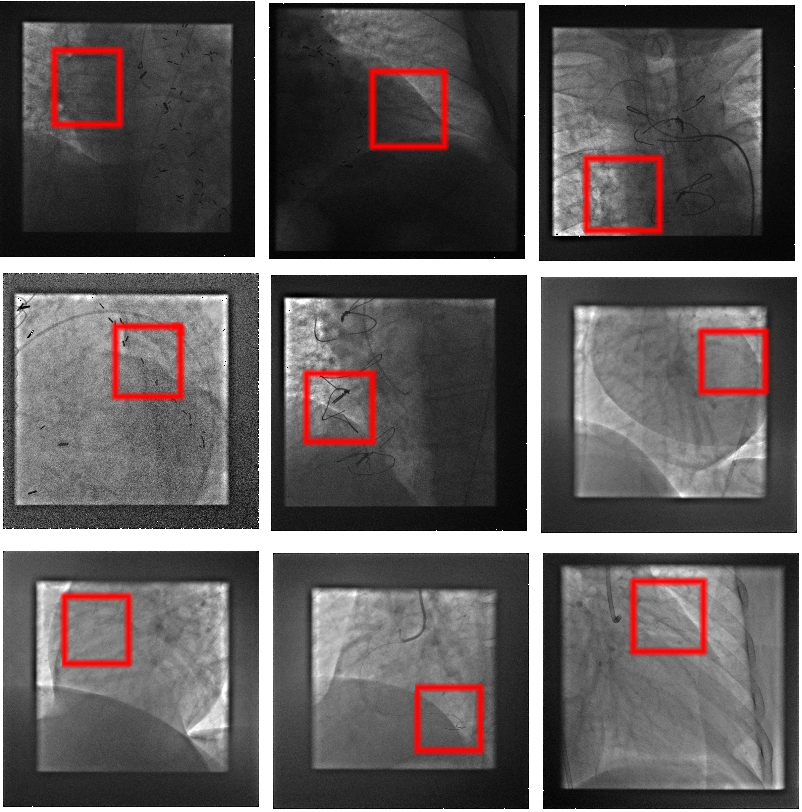Demo bi-transparency
(home)
Principle
We present results of our transparent motion estimation method for bi-transparent images (i.e., transparent image
sequences implying two layers only).
We have cropped 288x288 from nine real clinical image sequences. We display several 3-frames subsequences along with the
estimated motion fields at some interesting time instants of the sequences.
Since the transparent tissues motions are difficult to apprehend, it is interesting to closely observe these specific examples before
studying the whole image sequence. It is also reported (with the estimated motion fields) to allow the reader to assess
the reliability of the estimation method.
The fields are pictured with coloured vectors, whose length is twice the real displacement magnitude for sake of visibility.
The estimated displacements are directed toward the past to respect the notations ot the Transparent Motion Constraint.
As a result they are in the opposite direction compared to the usual represented velocity direction.
Sequences presentation

The nine selected sequences are pictured above, along with the cropped portion. We enumerate them and briefly describe why
they are interesting.
(Note: The sequences described in the TMI article are numbered 3, 19, 6 and 312 respectively)
Diagnostic sequence 301: diagnostic image sequence
imaging the heart that highlights the problems encountered when the motion constancy along
two successive temporal intervals is violated.
Diagnostic sequence 312: diagnostic image sequence
showing the methods ability to ignore perturbations (here a cardiac injection).
Diagnostic sequence 33: diagnostic image sequence
showing the methods ability to ignore perturbations (here a guide wire motion).
Diagnostic sequence 405: diagnostic image sequence
showing the methods ability to follow the motions of a stent along with the coronaries.
|